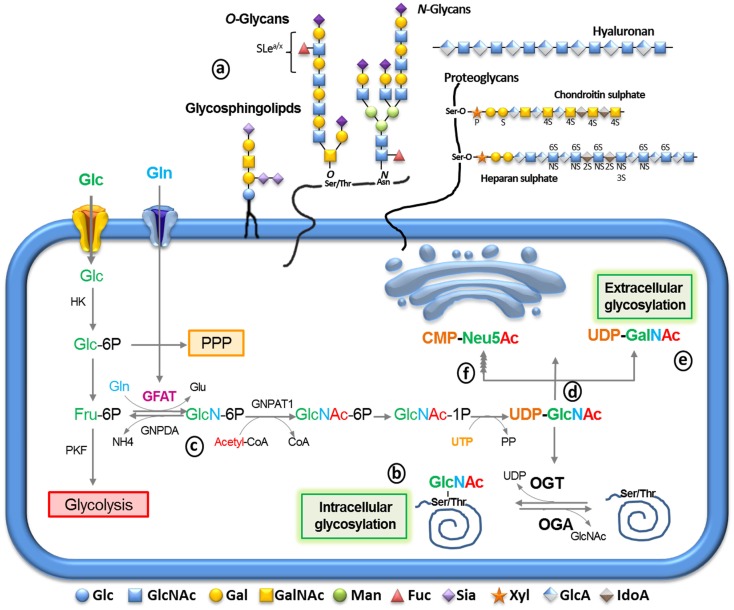Figure 1.
The synthesis of glycoconjugates from glucose through the hexosamine biosynthetic pathway (HBP). After glucose entry into the cell via the glucose transport, it is phosphorylated into glucose-6-phosphate (Glc-6P) by hexokinase (HK), mainly proceeding into glycolysis through conversion into fructose-6-phosphate (Fru-6P) by Glc-6P isomerase. Alternatively, Glc-6P may be utilized by the pentose phosphate pathway (PPP). Glc-6P can also be diverted to glucosamine-6-phosphate by the rate-limiting enzyme glutamine:fructose-6-phosphate amidotransferase (GFAT) (c). The end product of this pathway, uridinediphosphoglucose-N-acetylglucosamine (UDP-GlcNAc) (d) serves to build extracellular glycoconjugates (a), as well as, it is used for the biosynthesis of intracellular O-linked glycoproteins (b) by the enzyme O-GlcNAc transferase. Alternatively, UDP-GlcNAc can undergo epimerization to generate UDP-GalNAc (e) and CMP-Neu5Ac (f) which can be used for the extracellular biosynthesis of glycoproteins and glycolipids (a) UDP-GlcNAc and its derivatives are extremely responsive to variations in cell nutrients as its synthesis depends on products of the metabolism of glucose (green), amino acids (blue), fatty acids (red), and nucleotides (orange). Thus, glycosylation can serve as a reporter for the functional status of multiple pathways and considered a metabolic sensor.

